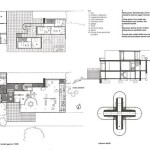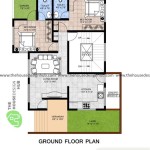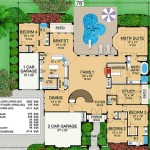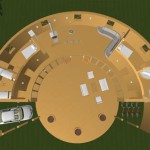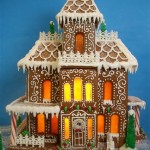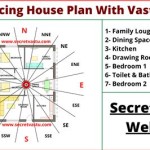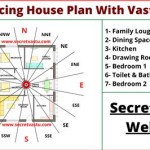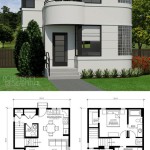Tree House Plans
Tree house plans provide a blueprint for constructing a safe and enjoyable elevated structure nestled amongst the branches of a tree. A well-designed plan considers the specific tree species, its health, and the surrounding environment. It outlines the necessary materials, dimensions, and construction techniques required for a successful project.
Choosing the right tree is paramount to a successful tree house. Hardy deciduous trees with strong, load-bearing branches are ideal. Oaks, maples, and beeches are often favored for their robust structure. Conifers can also be suitable, but their branch structure may require more complex support systems. A thorough assessment of the tree's health is vital, ensuring it is free from diseases or structural weaknesses that could compromise the tree house's stability.
Several different types of tree house plans cater to various skill levels and design preferences. Simple platform designs offer a basic elevated space, perfect for beginners. Suspended tree houses hang from strong branches, creating a swaying, adventurous experience. Multi-platform designs connect multiple platforms with bridges or walkways, offering greater complexity and space. Enclosed tree houses provide shelter from the elements and can function as small cabins or playrooms.
Once a suitable tree and design are chosen, the planning phase begins. Accurate measurements of the tree's branches and the desired dimensions of the tree house are crucial. These measurements inform the design and ensure a proper fit. The plan should also consider access to the tree house, whether through a ladder, stairs, or a rope bridge. Safety features, such as railings and guardrails, are essential to prevent falls.
Material selection plays a crucial role in the longevity and safety of the tree house. Pressure-treated lumber is commonly used for its resistance to rot and insect damage. Cedar and redwood are also popular choices due to their natural durability and aesthetic appeal. Hardware, such as bolts, screws, and nails, should be galvanized or stainless steel to withstand outdoor exposure. The plan should specify the type and quantity of each material required.
Construction techniques vary depending on the complexity of the design. Basic platform designs involve securing beams to the tree using specialized tree house attachment bolts, which minimize damage to the tree. More complex designs may require additional support structures, such as posts or bracing. The plan should outline the step-by-step construction process, including detailed diagrams and instructions.
Tree house plans often incorporate features to enhance the functionality and enjoyment of the space. Built-in benches, desks, or storage compartments can maximize the usable area. Windows and skylights can provide natural light and ventilation. Adding features like rope swings, slides, or climbing walls can transform the tree house into a thrilling playground.
Safety considerations are paramount throughout the design and construction process. The tree house should be designed to withstand the anticipated loads, including the weight of occupants, furniture, and any potential snow or wind loads. Regular inspections of the tree and the tree house are essential to identify and address any signs of wear or damage. Proper maintenance can prolong the life of the tree house and ensure its continued safety.
Acquiring tree house plans can be done through various avenues. Numerous online resources offer pre-designed plans for purchase or download. Architectural firms specializing in tree house design can create custom plans tailored to specific needs and preferences. Books and magazines dedicated to tree house construction also provide valuable information and inspiration.
Building a tree house is a rewarding project that can provide years of enjoyment. Following a well-designed plan ensures the safety, stability, and longevity of the structure. Careful consideration of the tree, materials, and construction techniques is essential for a successful outcome. A well-built tree house can become a cherished retreat, a place for adventure, and a lasting connection to nature.
Beyond the practical aspects, tree house plans also represent a creative endeavor. They allow for the realization of childhood dreams and the creation of unique, personalized spaces. Whether a simple platform or an elaborate multi-level structure, a tree house offers a unique perspective and a closer connection to the natural world.
The selection of a suitable tree house plan should consider the builder's skill level and experience. Beginners may find simple platform designs more manageable, while experienced builders can tackle more complex projects. Regardless of the chosen design, adhering to the plan's instructions and prioritizing safety are crucial for a successful build.
While pre-designed plans offer a convenient starting point, customization is often possible. Modifying existing plans to suit specific needs and preferences allows for a truly personalized tree house. Consulting with a structural engineer can ensure that any modifications maintain the structural integrity of the design.

San Pedro Treehouse Plans To Build In One Tree Or Free Standing House Diy Kids

Square Treehouse Tree House Plans Diy

12 X15 One Tree W Two Posts Treehouse Treehousebrackets Com

Treehouse Plan 8x15 Two Tree Treehousebrackets Com

Kauri Treehouse Plans To Build In One Tree Or Free Standing

House Plans Tree Kids Designs

12x15 One Tree W Two Posts Treehouse Plan Treehousebrackets Com

Kauri Tree House Plans Treehouse Guides

12 X15 One Tree W Two Posts Treehouse Treehousebrackets Com

8 Tips For Building A Treehouse Family Handyman

